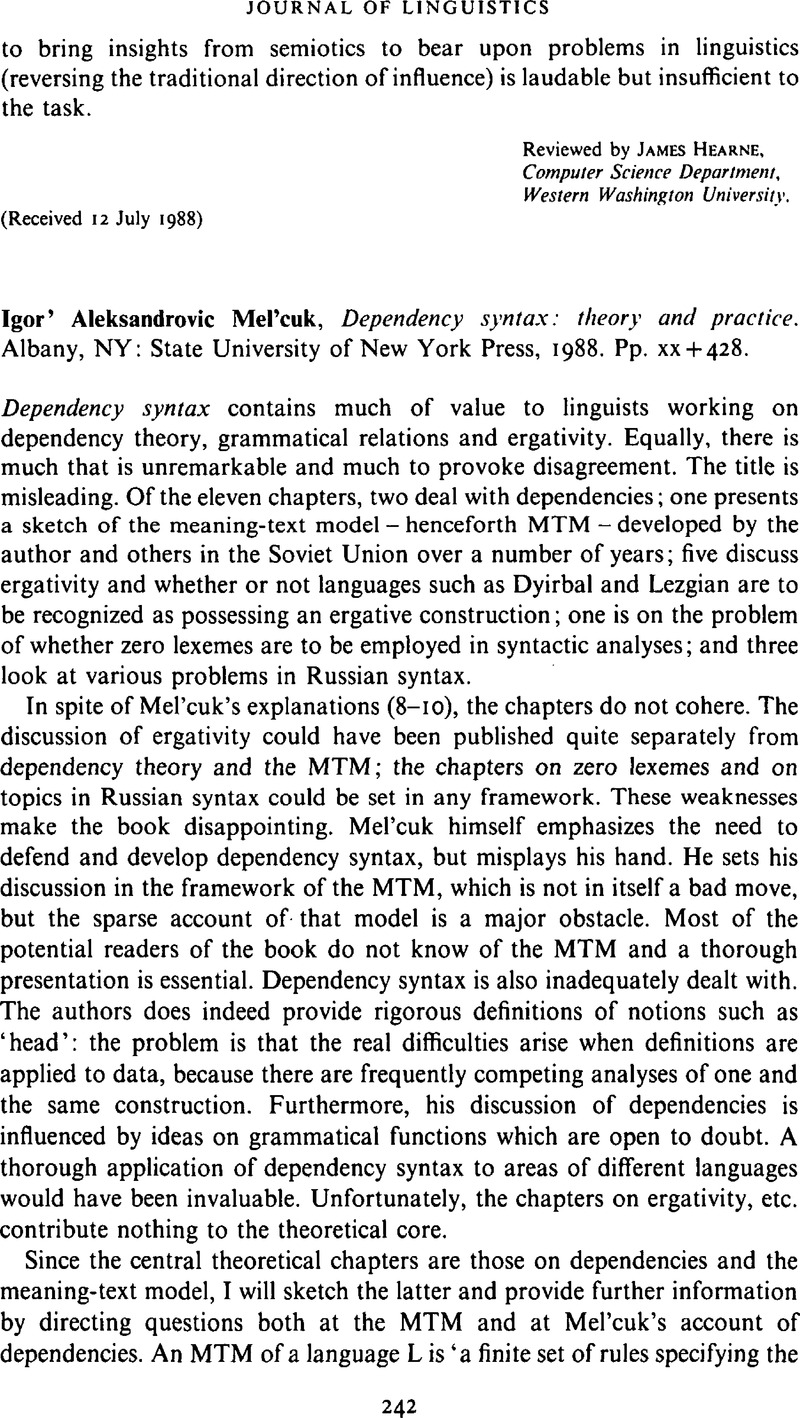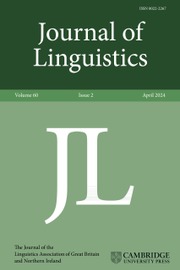No CrossRef data available.
Article contents
Igor' Aleksandrovic Mel'cuk, Dependency syntax: theory and practice. Albany, NY: State University of New York Press, 1988. Pp. xx + 428.
Review products
Igor' Aleksandrovic Mel'cuk, Dependency syntax: theory and practice. Albany, NY: State University of New York Press, 1988. Pp. xx + 428.
Published online by Cambridge University Press: 28 November 2008
Abstract
An abstract is not available for this content so a preview has been provided. Please use the Get access link above for information on how to access this content.

- Type
- Reviews
- Information
- Copyright
- Copyright © Cambridge University Press 1989
References
REFERENCES
Friedman, J. (1969). Directed random generation of sentences. Computational Linguistics 12. 40–46.Google Scholar
Miller, J. (1988). Numeral phrases and verb agreement in Russian: a dependency analysis. Work in Progress 21. University of Edinburgh: Department of Linguistics.Google Scholar
Schachter, P. (1976). The subject in Philippine languages: Topic, Actor, Actor-Topic, or none of the above? In Li, C. N. (ed.), Subject and topic. New York: Academic Press. 491–518.Google Scholar
Schachter, P. (1977). Reference related and role-related properties of subjects. In Cole, P. & Sadock, J. M. (eds), Syntax and semantics 8: grammatical relations. New York: Academic Press. 279–306.CrossRefGoogle Scholar


